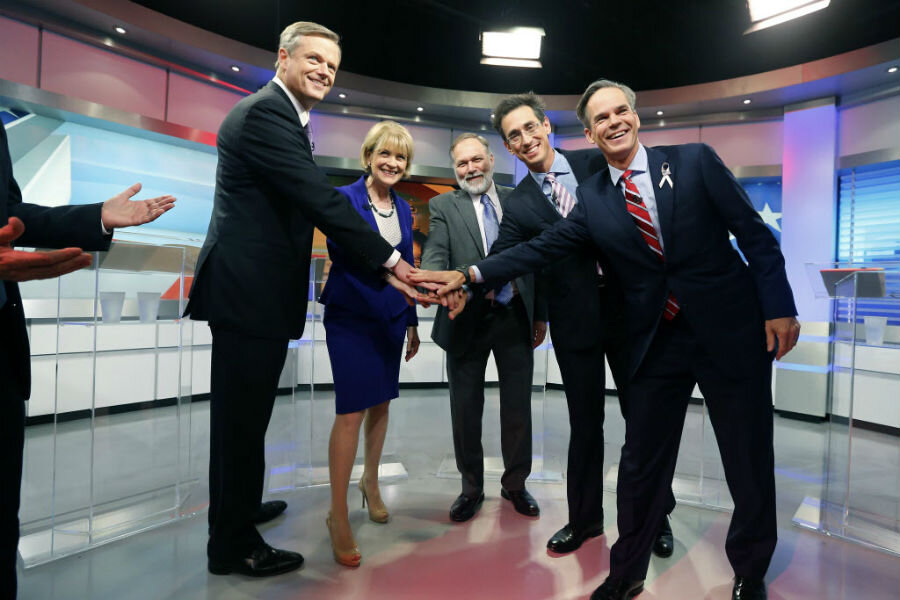Most US politicians are white and male, and numbers are still 'lopsided'
Loading...
Americans may may consider the United States a melting pot, but the nation's changing demographics are not yet reflected in elected offices, according to a new report released Wednesday from the Women Donors Network.
An examination of 42,000 elected officials, from the county to the congressional level, revealed that whites and men make up a disproportionate share at each level of government. While white men are 31 percent of the US population, they make up 65 percent of elected offices.
"These numbers are far starker than any of us expected," says Brenda Choresi Carter, director of the Women Donor Network's Reflective Democracy Campaign, who adds this is the most comprehensive study of its kind. "They are actually worse than I expected."
The study found that women fill 29 percent of elected offices, despite being 51 percent of population. Some 10 percent of elected officials identify as people of color, though minorities make up more than one-third of the population.
That means that women have one third the political representation enjoyed by men. Minorities are equally underrepresented. By that measure, white men have eight times as much political power as women of color, the study found.
"Numbers this lopsided really speak to a systemic problem," Ms. Carter says.
This summer's events in Ferguson, Mo., highlighted an extreme example of the ways in which elected offices have not kept pace with the country's shifting profile, Carter says. Ferguson is a majority black town while the majority of the city's power structure – city officials and police – are white. In August, 18-year-old Michael Brown, who was black, was shot and killed by a white police officer, triggering weeks of protest and unrest.
"What happened in Ferguson is really a stark and tragic illustration of this problem: the mismatch of the American people and the people who are elected to serve them," Carter says.
A nationwide survey of 800 voters, conducted in conjunction with the report, found a perception of structural barriers blocking women and people of color from elected office. It also found strong bipartisan support for more women and people of color in elected office.
But the strongest catalyst for institutional change may be time, says William Frey, a demographer at the Brookings Institution.
"Change is coming," he says. "And in the next 10 to 15 years there will be a huge number of minorities of voting age who will likely vote to put change in place."
Although the nation has seen a black president and has a likely female presidential contender in 2016, he attributes poor minority representation in lower levels of elected office to the fact that non-white minorities tend to live in more densely packed areas. While those areas do often produce minority candidates, minorities are not spread evenly throughout the country, he says.
Moreover, because congressional incumbents typically get reelected over and over again, he says it is difficult to achieve large-scale change among members of Congress in a short period of time.
Still, in a little over a decade "there will be such a significant number [of minorities] that it will be hard to ignore their interests," he says.








